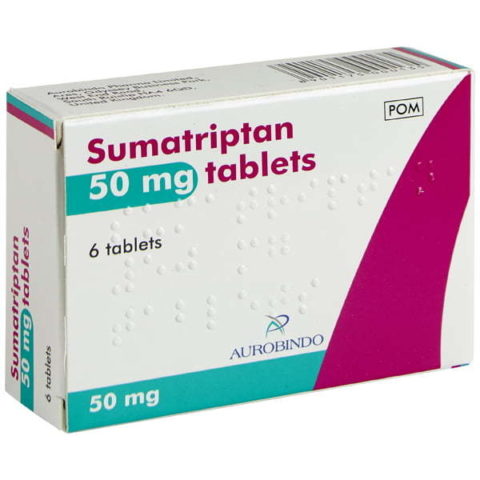Need something else?
We stock over 1102 treatments for 90 conditions

Migraine prodrome is the first of four stages in the migraine timeline, preceding aura, attack and postdrome.
A migraine prodrome is one of the early warning signs of migraine. Spotting a prodrome gives you an opportunity to reduce the severity of a migraine attack or prevent one from happening.
This guide explains everything you need to know about the migraine prodrome phase, from symptoms to treatments.
The premonitory (prodrome) phase of a migraine is the warning stage. It’s the start of a migraine and gives you an opportunity to take steps to hopefully avoid an attack. The prodrome migraine stage can last from hours to days and is experienced by most migraine sufferers.
There are a number of steps you can take during the prodrome stage to avoid a full migraine attack or reduce its level of severity, such as:
You won’t necessarily get the prodrome stage with every migraine episode you have. Some people move straight into the following stages of a migraine, reaching an attack sooner than those who begin with the premonitory phase.

The migraine prodrome symptoms aren’t the same for everyone — you may experience migraine prodrome dizziness but not migraine prodrome anxiety. Prodrome symptoms range from person to person but these are the main ones you need to look for.
These 27 symptoms can be broadly grouped into the following four categories.

Mood alterations during a migraine prodrome include:

Gastrointestinal issues during a migraine prodrome include:

Muscular issues during a migraine prodrome include:

Common changes in state during a migraine prodrome include:
Prodrome is the first of the migraine phases and precedes a full-blown attack.
Migraine pathophysiology studies have shown it can be effective in treating attacks during the prodrome. However, these were largely small studies that haven’t been replicated on the larger scale required to provide an appropriate level of scientific certainty.
The overall assessment is that it could be appropriate for you to be treated for an attack if you have a migraine prodrome. If it is appropriate to seek treatment then it’s reasonable to say that the earlier you do so the better it will be for you.
There are two key studies that have assessed the effectiveness of treating migraine attacks during the prodrome phase. These are the studies:
A migraine prodrome happens before a full attack.
But while it isn’t as severe as an attack, a migraine prodrome does have some unpleasant symptoms that will require you to look after yourself. This is how you can take care of yourself during a migraine prodrome:
If there are any things you’re aware of that can trigger you to have an attack then avoid them. Migraine triggers vary from person to person, ranging from caffeine to coughing.
If you keep a diary of your triggers then you can take appropriate action during the migraine prodrome stage and reduce your chances of having an attack.
Abortive medications are designed to stop a migraine before it develops and becomes more severe.
A prodrome can be one of the key migraine warning signs, serving as a notice for a full-on attack and it may be appropriate to take abortive medications at this stage.
You should consult a doctor or pharmacist before taking abortive medications during the prodrome phase.
Work has been done and studies carried out on the impact of using behavioural tactics (such as mindfulness and cognitive behavioural therapy) to tackle migraines.
The American Headache Society published an interview with Elizabeth Seng, PhD, FAHS in which Dr Seng talks about the use of mindfulness-based CBT interventions to tackle migraines.
In this interview, Dr Seng explains that “we saw large changes in headache-related disability over the course of eight weeks of mindfulness-based cognitive therapy for migraine”.
Preventing a full-blown migraine begins with finding the triggers that cause you to experience an attack.
Once you’ve established your triggers, there are some natural measures you can take to prevent a migraine attack. These are the main natural ways of preventing migraines:
The NHS advises that you “should see a GP if you have frequent or severe migraine symptoms”. As an attack is the most severe of the migraine stages, it stands to reason that you should see a doctor if you have frequent attacks.
The NHS expands on its advice for going to a doctor in the event of a migraine by explaining that you should see a GP if you have migraines on more than five days a month.
The NHS also highlights that you should immediately dial 999 and request an ambulance if you or someone of experiences any of the following things:
If you or someone you’re with experiences any of these symptoms then it may indicate you/they have a condition that’s more serious than a migraine, like meningitis or a stroke.
There are four stages in a migraine attack: prodrome, aura, attack and postdrome. Each of these four stages has its own symptoms and we’ve highlighted them below:
Migraine attacks can be agonising and there are a number of treatments you can use to relieve your pain. These are the main migraine treatments you can take to help manage an attack:
Over-the-counter painkillers can be an effective way of bringing you migraine relief. If you need stronger medication then you can complete an online consultation and get prescription treatment for your migraine. Or you can speak to one of our qualified medical experts, who can offer advice about choosing the most suitable treatment for migraines.
We stock over 1102 treatments for 90 conditions